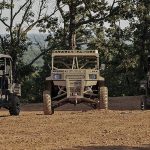A study released by the U.S. Forest Service (USFS) last week, projects steady and even robust growth in participation in outdoor sports through 2060 despite declining participation rates in several core activities.
The “Outdoor Recreation Trends and Futures” report provides an extensive and detailed overview of outdoor recreation participation, regional variation in participation, and differences in participation by demographic groups. As the only public agency-sponsored, long range forecast of recreation demand for the United States, the 184-page report influences what and where USFS develops infrastructure for outdoor recreation.
Among the findings in the 184-page report is that the total number of people who participated in one or more of 60 natured-based activities from 2000 to 2009 grew by 7.5 percent, while the total number of activity days of participation increased over 32 percent. Much of that growth, however, came not from sports but from passive pursuits, including bird watching and photography.
“Viewing/photographing nature” accounted for 35.9 million, or 82 percent of the land-based activity days to U.S. forested areas between 2005 and 2009. “Backcountry” activities, which generated the second largest number of activity days, reached just 3.1 million annual days.
“By 2060, nearly 340 million adults will be participating in at least one form of nature viewing, an increase from the 190 million adults of today,” reads the report, which cites a variety of research, including participation research funded by Outdoor Industry Association.
The report notes that motorized off-road and snow activities grew from 2000 to about 2005, but ended the decade at about the same level as 2000. The trend in hunting, fishing, and backcountry activities remained relatively flat and various forms of skiing, including snowboarding, declined during this period.
Nevertheless, population growth ensures that outdoor sports will thrive well into the century. For instance, while per capita adult participation rates in backcountry activities, motorized off-road activities and paddling are all forecast to be flat or decline up to 18 percent through 2060, the number of people participating in each activity is expected to grow 25 to 65 percent.
The five activities projected to grow fastest in per capita participation over the next 50 years will grow faster still. Those, and their projected growth in per capital participation through 2060, include: downhill skiing and snowboarding (20 to 50 percent); cross country skiing and snowshoeing (9 to 31 percent); mountain biking, mountain climbing, rock climbing or caving (6 to 18 percent); equestrian activities (3 to 19 percent); and motor-boating, waterskiing or use of personal watercraft (-3 to 15 percent).
The five activities projected to grow the most in terms of sheer numbers are downhill skiing and snowboarding (68 to 147 percent), cross-country skiing or snow shoeing (55 to 106 percent), mountain biking, mountain climbing, rock climbing or caving (50 to 86 percent); equestrian activities (44 to 87 percent), and motor-boating, waterskiing or use of personal watercraft (41 to 81 percent).
“Access for activities such as snow skiing, rock climbing, and horseback riding may rise in importance relative to other activities,” wrote Ken Cordell, the USFS scientist who authored the report and is one of the foremost authorities on recreational trends in the United States. “Access for off-road and snowmobile driving, hunting, and fishing may decline in relative importance.”















